MUMBAI: Mumbai witnessed its coldest winter in years on Wednesday night, when temperatures dipped to about 11.6 degree Celsius.
The city usually experiences about 17 degree Celsius temperature during December. This was about 6 degrees below normal.
The lowest recorded minimum temperatures for the month of December was 12 degree Celsius on December 15 last year.
According to weather department officials, minimum and maximum temperature levels will continue below normal for next 24 hours.
Cold and dry northwesterly winds from Pakistan have resulted in a significant drop in temperatures.
This is the second lowest minimum temperatures recorded for December since 2004.
As Mumbai shivered at 11 degrees, Mahabaleswhar recorded a temparature of 14 degrees Celsius.
The maximum temperature in December, which usually hovers around 24 degree Celsius in Mahabaleshwar has risen five degrees above normal this year. The minimum temperature which is usually 13 degree Celsius was at least 17 degree Celsius since the past week.
Two days after one of the missing youths from Malwani was traced by the Anti Terrorism Squad, one more youth returned home on his own on Thursday. The ATS is now quizzing him about his whereabouts and movements during the time that he was missing.
According to ATS officials, the youth, Noor Mohammad, who had been missing since December 15, reached his Malwani residence on Thursday afternoon.
His family then informed the police about his return, who in turn informed the ATS.
“We are making inquiries with Mohammad about where he was and what he did during the time that he was missing. So far, there has not been any indication of him having established contact with any terrorist outfit, but it is still too early to reach a conclusion,” said an ATS officer.
The ATS had picked up the first missing young man, Wajid Sheikh, from Pune on Tuesday and had allowed him to go after questoning him in detail.
Meanwhile, officials confirmed that one of the two remaining missing men, Ayaz Sultan, had left the country last month.
Sultan had gone missing in October, and on November 1, he boarded a flight to Kabul after which he has been untraceable.
“We do not have any information about him having reached Syria but there has been no other information about his whereabouts either,” said an officer.
The Lok Sabha on Thursday passed the Juvenile Justice (Care and Protection of Children) Act, 2014 which will allow children in the 16-18 age group to be tried as adults if they commit heinous crimes. The bill will now be debated in Rajya Sabha, where the government despite lacking a majority in that House, will be hoping it is passed.
The amendments were prepared in the backdrop of public outcry over the Delhi gangrape case of 2012 in which a juvenile accused received a lighter punishment because of his age.
On Wednesday, several members in Lok Sabha opposed the controversial amendment that provides for treating juveniles between the age of 16 – 18 years on par with adults for crimes such as rape.Rehabilitation and not retribution should be the policy, said many members, while expressing their concern over the amendments to the bill.
The House agreed to pass the bill after a clause that any 16-18 year old, who commits a less serious offence, may be tried as an adult only if he is apprehended after the age of 21 years, was deleted.
Women and Child Development Minister Maneka Gandhi had said in case a heinous crime has been committed by a person in the age group of 16-18 years it would be examined by a Juvenile Justice Board to assess if the crime was committed as a ‘child’ or as an ‘adult’.
The trial of the juvenile, whether as an adult or child, would depend upon the opinion of the board which would comprise psychologists and social experts, she said.
The henious crimes, she said, would include those offences under the Indian Penal Code (IPC) which attract jail term of over seven years.
The bill, she further said, proposed to modify the norms of adoption to ensure that uncared children find a suitable home as early as possible. As per the proposal, NRIs wanting to adopt a child will be treated at par with resident Indians.
Although the lawmakers did not have problems with the provisions relating to adoption, they were divided over the issue of trying children between 16-18 years of age involved in heinous crimes as adults. Among those who supported the bill in Parliament were Prahlad Patel (BJP) and Tathagata Satpathy (BJD) who argued that punishment should be linked to the gravity of crime not the age.
Opposing the Bill, Shashi Tharoor (Congress) said it was violative of the UN conventions of children and against the Constitution.
The justice system should focus on “rehabilitation and not retribution”, he said, adding it would be “emotionally, ethically and morally” wrong to punish a child, who does not have access to basic facilities, like an adult.
There is no scientific system of determining the age of a children and in certain cases it is done by looking at the child, he said, and quipped “General (VK) Singh knows it.”
Singh, who is Minister of State for External Affairs, was involved in a prolonged legal battle over the issue of his age when he was the Army Chief four years back.
Speaking on the issue, Parliamentary Affairs Minister Venkaiah Naidu said as an individual he feels that if a person is capable of committing a heinous crime of rape then the punishment will have to be in accordance to the crime.
Vinod Kumar (TRS) opposed the trial of juvenile between 16 to 18 years of age as adults, saying they need education and moral classes as most of them committing crimes come from economically backward families.
Quoting data, he said crime committed by juvenile as a percentage of total crime is just 1.2 percent.
“In present circumstances educating them and giving them moral classes will help control such crimes. But if he is tried like adults in the age of 16-18 years, it would have bad impact on their psychology,” Kumar said.
Badaruddoza Khan (CPIM) said the lowering of age of trial of juvenile for heinious crimes is not in accordance with the international laws.
“The amendment with regard to lowering of age is short-sighted, unjust and against public interest,” Khan said.
He had suggested that the provisions of the Bill be such that the juvenile be allowed to consult with psychologists to prevent them from repeating the mistake.
P Srinivasa Reddy (YSRCP) said putting the 16-18 years olds in jail along with adults would make them hardend criminals.
Supporting the Bill for the changes it brought about in adoption laws, Supriya Sule (NCP) cautioned the government against drafting the amendments out of emotion.
ALSO SEE
Juvenile Justice Act: In Lok Sabha, Shashi Tharoor says amended bill will embarrass govt
Juvenile Justice Act: In Lok Sabha, Shashi Tharoor says amended bill will embarrass govt
Amending Juvenile Justice Act to try 16-year-old’s as adults won’t fix anything and here’s why
Amending Juvenile Justice Act to try 16-year-old’s as adults won’t fix anything and here’s why
Juvenile criminals aged 16-18 years in heinous crimes may be treated as adults after cabinet nod
Juvenile criminals aged 16-18 years in heinous crimes may be treated as adults after cabinet nod
“The law comes in the backdrop of the gangrape. For one Nirbhaya rape, you cannot make a law out of emotion… You need to look into your international commitments as well,” she said.
Sule said she stands in dilemma whether to support the Bill or not and demanded to know from the Minister what is the roadmap of the NDA government with regard to juvenile age.
“We need to look into the psychology aspect. Every child, although he makes a mistake, deserves a second chance,” she said.
Dharamvir Gandhi (AAP) said that lowering the age to 16 years for trial of juvenile would be injustice to the child as a child of that age is unable to comprehend a situation.
“The age should not be brought down. It will be gross injustice to the child and will be violation of international laws,” he said.
With PTI inputs
City churches are gearing up as the favorite season, Christmas is round the corner. It is not too far and parishioners have already begun decking up the church premises. To add to the festive fervor and excitement, churches around the city have organised various competitions. From making cribs to decorative stars, it is a gala time as they welcome this season.
Yuletide is the most awaited time of the year, as kids wait for Santa to come with gift and for adults it is all about socialising within the community. One of the churches has chalked down quite a few activities for the kids, the youth and the senior citizens. On December 21, they have arranged for a special prayer meeting and games for senior citizens to attend, as some may not be able to attend the midnight mass.
“We have also made sure that those who will not be able to travel by themselves will get a pick up and drop service by the church,” said the priest. The parishioners have already decorated the tree and will be soon working on the cribs. The parish is divided into 12 communities and each community will be preparing a crib. Along with it, there will be carol singing competition. On December 28, the church will be celebrating family day.
Another church members have decided on a theme and will be working on reaching out to the poor and needy, so that they can celebrate Christmas in a meaningful manner. The motive is to provide them with basic amenities like at least clothes to wear and food to eat. “Along with this, the church will make sure that the area is kept clean, keeping in mind the prime minister’s call,” said the parish priest. The church has also worked on competitions like poetry, essay writing, poster and quiz. The youth will be staging a few performances to add to the Christmas feel.
The youth members of prominent churches like Our lady of mercy church, St Thomas Church and Marthoma Syrian Church are active during the season and the youth cell had organised a prayer service recently, along with which, the women cell have started preparing for Christmas sweets. Various churches will conduct star making contests, where communities will be displaying their creative work. One of the priests said, “All the stars will be used to decorate the church premises. The parishioners will also make cribs, while working with their respective community members.”
MUMBAI: The Shillong Chamber Choir that made choral singing fashionable after they took it out of the hallowed confines of the church and classical evenings to winning the top prize at India’s Got Talent, will take centrestage at St Peter’s Church grounds, Bandra, on Wednesday evening. The 21-member choir that packs in everything—from Abba and Boney M to Bollywood retro and gospel songs—will dish out a “full musical buffet” as Damon Lyndem, the choir manager puts it. And of course, popular holiday tunes to ring in Christmas. The choral sensation from the northeast will see the Shillong Chamber Orchestra for the very first time.
A 30-piece musical ensemble of wind and string musicians from all over Europe will join the choir and their band on stage to perform pieces orchestrated by Neil Nongkyrih, founder and conductor of the Shillong Chamber Choir.
The two-hour long concert will end with the choir paying a tribute to the flood victims of Chennai and funds raised will go into the chief minister’s relief fund for farmers.
MUMBAI: Over a week after artist Hema Upadhyay and her lawyer were found murdered in Mumbai, her estranged husband Chintan Upadhyay has been arrested.
Chintan Upadhyay was called in for questioning late last night and placed under arrest at around 3:30 this morning.
Chintan and Hema Upadhyay’s marriage was reportedly troubled and divorce proceedings were on.
The bodies of 43-year-old Hema Upadhyay, a noted installation artist, and her lawyer Harish Bhambani, were found wrapped in plastic, packed in boxes and dumped in a sewer on December 11 in Mumbai’s Kandivali area.
Five people have been arrested in the case so far.
Hema’s relatives have said they suspect her husband’s role in the murder. Last week, her cousin Deepak Prasad had told the media that he and others in the family “strongly suspected Mr Upadhyay’s role behind the conspiracy to kill his wife.” He also alleged that some years back, Mr Upadhyay had warned his wife that he would kill her and could go to any extent to do so.
Based on the statements of Ms Upadhyay’s relatives, her husband was questioned more than once.
Chintan Upadhyay has told the police that though they were not together, he still loved his wife and they had no problems. He did admit to a property dispute.
What raised the suspicion of the police was that Chintan was close to the main accused in the case, Vidyadhar Rajbhar, who is still missing. Rajbhar was last seen in Bhusaval.
Nepal government has decided to amend the new Constitution to address two key demands of agitating Medhesis regarding proportional representation and constituency delimitation in a bid to break the months-long political logjam, a move welcomed by India.
The decision was taken at an emergency Cabinet meeting held at Singha Durbar here last night which also agreed to set up a political mechanism to recommend solutions to disputes over the proposed provincial boundaries within three months of its formation.
The agitating Madhes-based parties have been protesting for over four months against the seven-province model proposed in the new Constitution adopted on September 20 that divides their ancestral land as a way to politically marginalise them. Over 50 people have been killed in protests by Madhesis since August.
The Madhesi parties have blockaded Nepal’s border trade points with India, causing a shortage of essential goods and medicines in the landlocked Himalayan country.
The Cabinet meeting decided to move forward with the bill to amend the new Constitution which has already been tabled in Parliament.
The foreign ministry, in a statement released a day after police killed a class 10 student in fresh clashes, said the Cabinet had agreed to support the constitutional amendment bill that would increase the Madhesi presence in government bodies through proportional representation.
“The process for the adoption of the Constitution amendment bill tabled in the parliament will be advanced in order to ensure the participation in the state organs on the basis of proportionate inclusiveness,” the statement said.
“With regard to the demarcation of provinces…a political mechanism will be constituted, which will submit its report along with recommendations within three months,” the statement said.
Minister for Industry Som Prasad Pandey, after the meeting, told reporters, “The bill has ensured proportional inclusive participation in various state organs as demanded by the agitating parties and has also proposed delimitation of the electoral constituencies based on population,”
On political mechanism, he said, it “will recommend solutions to disputes over the proposed provincial boundaries within three months of its formation”.
Nepal informed India that some important decisions have been taken to resolve demands raised by agitating Madhesis which was welcomed by the Indian government.
“Government of India welcomes these developments as positive steps that help create the basis for a resolution of the current impasse in Nepal. As a neighbour and well-wisher, India was deeply concerned at the unrest stemming from internal differences in Nepal on the Constitution,” the External Affairs Ministry said in a statement.
The three-point proposal has been discussed at several rounds of talks with the agitating parties which have expressed some reservations and have demanded further clarity.
Similarly, the meeting also urged the agitating parties to call off their protests, saying that their demands can be addressed through dialogue.
“Besides these issues, the demands related to citizenship and other issues can also be settled through negotiations. So, we urge them to withdraw the protests immediately,” Pandey said.
“We are hopeful that there will be positive outcome from the decision,” Pramod Dahal, press advisor of Prime Minister K P Sharma Oli, said.
NEW DELHI: All ten were killed when a small Ranchi-bound BSF Superking aircraft with two pilots and eight technicians on board crashed near Dwarka here shortly after take-off. Civil Aviation Minister Mahesh Sharma confirmed that there are no survivors. BSF and Aviation sources has earlier said the likelihood of any survivors in the crash at Bagdola village near Dwarka were dim. The Aviation sources said the accident happened at around 9.50 am when the plane crashed into the airport boundary wall and landed in a sewage treatment plant while returning back due to apparent technical problem five minutes after it took off for Ranchi.
First Visuals from near the spot where Ranchi-bound BSF Superking aircraft crashed in Delhi’s Dwarka | ANI The aircraft lost contact with the Air Traffic Control, at 9.50 am, they said. BSF sources said the technicians were on the way to Ranchi to repair a helicopter. Eyewitnesses said the plane hit a wall before bursting into flames and then crashed
into a water body. Joint Commissioner Police Devender Pathak said they have recovered two bodies from the crash. “We saw a plane spiralling down which crashed near the wall where work was going on. I could sport one body. A labourer who was working was also injured,” an eye witness Suraj told reporters. The area was engulfed in dense smoke and fire with pieces of aircraft spread around. Delhi Fire Service cheif A K Sharma said 15 tenders have rushed to the spot. An inquiry has been ordered by the Civil Aviation Ministry. Union Home Minister Rajnath Singh briefed Prime Minister Narendra Modi about the crash and has rushed to the crash site.
Washington, Dec 20 (IANS) An Indian-American surgeon is hoping to raise $25 million to train 1.5 million first responders – the first rescuers to arrive at an accident scene – in five years to prevent over 1,000 deaths on Indian roads every day that cost the nation $50 billion annually.
Rajasthan University-educated surgeon Dr. Dinesh Vyas, an assistant professor in the Department of Surgery at Michigan State University since 2011, has already trained over 4,000 first responders in India using a $200,000 simulator dummy.
He is now leading a strong international multi-disciplinary team to India from December 26 to January 4, 2016 to win support for the programme from Indian auto, IT and healthcare industries by way of corporate social responsibility (CSR).
“This programme will generate $5 billion business for auto, IT and healthcare industries and will save a lot of lives,” Vyas told IANS in an interview.
“Trauma and roadside epidemic is one of the biggest health concerns for India,” he said. “Unfortunately, it has been neglected for a long time and with a three percent annual increase in deaths, we have more than 1,000 deaths everyday and 5,000 severe disabilities.”
Over the last eight years, Vyas’ team has established five centres in Rajasthan which have trained 2,000 first responders in person and another 2,000 through an online course with the help of 200 trainers under its umbrella. Training 1.5 million first responders at 50 centres in the next five years would stall a three percent increase in mortality, he said. “Our next five-year goal will be to reduce the mortality to one percent annually, at par with any developed nation.”
The idea behind taking an international delegation to India, Vyas said, was “to address the trauma problem holistically”.
“We are concentrating systematically on all the aspects of trauma, to prevent a burden on the health system,” with a focus on pre-hospital cae while simultaneously building a platform on prevention.
The aim is to develop and build a contextual training programme in multiple aspects of trauma in various Indian languages starting with Hindi, Bengali and Telugu.
The international delegation comes with major strengths in fields ranging from surgery and trauma and critical care to mass media and communication to health legal issues and highway engineering.
The delegation includes faculty from US and Britain, with several endowed professors from Pittsburgh, Michigan State and other major universities.
Dr. McSwain from Tulane University, one of Vyas’ collaborators, developed in 1980 a four-tier system in the US that goes from online education to highly sophisticated trauma programmes for surgeons.
“The technology we are using is not available even in most of the centres in the US at this time,” Vyas said. “We are designing a programme that will eventually help even developed nations in building a cost efficient programme.”
To raise money for the programme, Vyas and his team are making presentations to various foundations and IT companies both in the US and India.
During his visit to India, Vyas would be visiting Jodhpur, Jaipur, Hyderabad, Manipal, Bangalore, Karimnagar and New Delhi.
He would be addressing, among others, the National Police Academy in Hyderabad and the Rajasthan Police Academy and meet officials and fellow professionals to gain support for his mission.

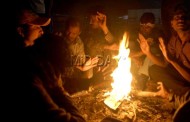
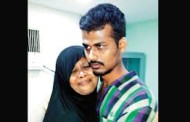

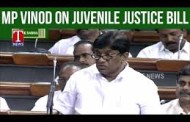



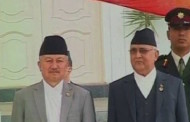
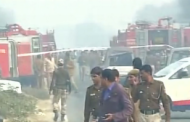






Recent Comments